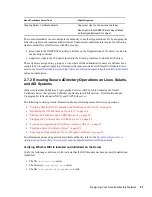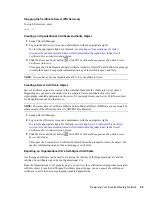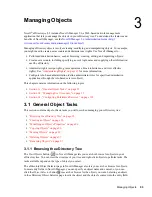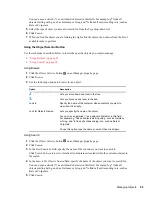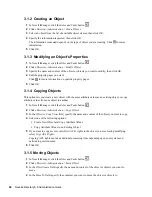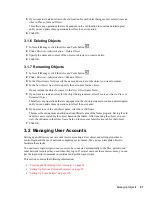
82
Novell eDirectory 8.8 Administration Guide
n
ov
do
cx (e
n)
22
Ju
n
e 20
09
The speed of network infrastructure (such as network adapters, hubs, and routers)
The amount of network traffic
2.4 Guidelines for Replicating Your Tree
Creating multiple eDirectory partitions does not, by itself, increase fault tolerance or improve
performance of the directory; however, strategically using multiple replicas does. The placement of
replicas is extremely important for accessibility and fault tolerance. eDirectory data needs to be
available as quickly as possible and needs to be copied in several places to ensure fault tolerance.
For information on creating replicas, refer to
Chapter 5, “Managing Partitions and Replicas,” on
page 131
.
The following guidelines will help determine your replica placement strategy.
“Workgroup Needs” on page 82
“Fault Tolerance” on page 82
“Determining the Number of Replicas” on page 83
“Replicating the Tree Partition” on page 83
“Replicating for Administration” on page 83
“Meeting Bindery Services Needs for NetWare” on page 84
“Managing WAN Traffic” on page 84
2.4.1 Workgroup Needs
Place replicas of each partition on servers that are physically close to the workgroup that uses the
information in that partition. If users on one side of a WAN link often access a replica stored on a
server on the other side, place a replica on servers on both sides of the WAN link.
Place replicas in the location of highest access by users, groups, and services. If groups of users in
two separate containers need access to the same object within another partition boundary, place the
replica on a server that exists in the container one level above the two containers holding the group.
2.4.2 Fault Tolerance
If a disk crashes or a server goes down, replicas on servers in other locations can still authenticate
users to the network and provide information on objects in partitions stored on the disabled server.
With the same information distributed on several servers, you are not dependent on any single server
to authenticate you to the network or to provide services (such as login).
To create fault tolerance, plan for three replicas for each partition if the directory tree has enough
servers to support that number. There should be at least two local replicas of the local partition.
There is no need to have more than three replicas unless you need to provide for accessibility of the
data at other locations, or you participate in e-business or other applications that need to have
multiple instances of the data for load balancing and fault tolerance.
You can have only one master replica. Additional replicas must be read/write, read-only, or filtered.
Most replicas should be read/write. They can handle object viewing, object management, and user
login, just as the master replica can. They send out information for synchronization when a change is
made.
Summary of Contents for EDIRECTORY 8.8 SP5
Page 4: ...4 Novell eDirectory 8 8 Administration Guide novdocx en 22 June 2009...
Page 72: ...72 Novell eDirectory 8 8 Administration Guide novdocx en 22 June 2009...
Page 118: ...118 Novell eDirectory 8 8 Administration Guide novdocx en 22 June 2009...
Page 130: ...130 Novell eDirectory 8 8 Administration Guide novdocx en 22 June 2009...
Page 188: ...188 Novell eDirectory 8 8 Administration Guide novdocx en 22 June 2009...
Page 222: ...222 Novell eDirectory 8 8 Administration Guide novdocx en 22 June 2009...
Page 240: ...240 Novell eDirectory 8 8 Administration Guide novdocx en 22 June 2009...
Page 264: ...264 Novell eDirectory 8 8 Administration Guide novdocx en 22 June 2009...
Page 290: ...290 Novell eDirectory 8 8 Administration Guide novdocx en 22 June 2009...
Page 322: ...322 Novell eDirectory 8 8 Administration Guide novdocx en 22 June 2009...
Page 540: ...540 Novell eDirectory 8 8 Administration Guide novdocx en 22 June 2009...
Page 548: ...548 Novell eDirectory 8 8 Administration Guide novdocx en 22 June 2009...
Page 616: ...616 Novell eDirectory 8 8 Administration Guide novdocx en 22 June 2009...




















